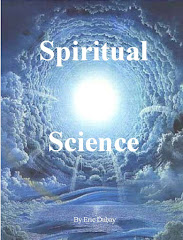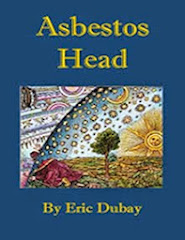 What is the #1 most important key factor to achieving and
maintaining optimum health, energy, longevity, vitality, and wellness? Is it genetics, diet, exercise, hydration,
sleep, mindset, environment? Certainly
all of these factors are very important, but in fact they are all secondary to
something most doctors and lay-people alike completely overlook. Think about this: what is the most important thing in your
life? It’s so important that you do it all
day every day and all night every night.
You are even doing it unconsciously right now while reading this. It’s something so crucial to your health,
longevity and wellness that ceasing for even a few minutes results in certain
death! The one and only undeniable
answer is Breathing. To breathe is to
live and without breath there can be no life.
All life, plant and animal, from birth to death, completely depends upon
the air for health, well-being and continued existence. From microscopic mitochondria to macroscopic
lungs, every living cell breathes and depends on the air’s life-giving
properties for sustenance.
What is the #1 most important key factor to achieving and
maintaining optimum health, energy, longevity, vitality, and wellness? Is it genetics, diet, exercise, hydration,
sleep, mindset, environment? Certainly
all of these factors are very important, but in fact they are all secondary to
something most doctors and lay-people alike completely overlook. Think about this: what is the most important thing in your
life? It’s so important that you do it all
day every day and all night every night.
You are even doing it unconsciously right now while reading this. It’s something so crucial to your health,
longevity and wellness that ceasing for even a few minutes results in certain
death! The one and only undeniable
answer is Breathing. To breathe is to
live and without breath there can be no life.
All life, plant and animal, from birth to death, completely depends upon
the air for health, well-being and continued existence. From microscopic mitochondria to macroscopic
lungs, every living cell breathes and depends on the air’s life-giving
properties for sustenance.
“Breathing may be considered the most important of all of
the functions of the body, for, indeed, all the other functions depend upon
it. Man may exist some time without
eating; a shorter time without drinking; but without breathing his existence may
be measured by a few minutes. And not
only is Man dependent upon Breath for life, but he is largely dependent upon
correct habits of breathing for continued vitality and freedom from
disease. An intelligent control of our
breathing power will lengthen our days upon the earth by giving us increased
vitality and powers of resistance, and, on the other hand, unintelligent and
careless breathing will tend to shorten our days, by decreasing our vitality
and laying us open to disease.” -Yogi
Ramacharaka, “The Science of Breath” (6)
 Pranayama is the ancient vedic science of breathing
practiced and perfected over several thousand years by Indian yogis. Shaolin martial monks and Taoists evolved and
perform a similar discipline known as Qigong (Chi Kung). For the past several years I have been diligently
learning, practicing, and teaching Pranayama / Qigong and I can say from daily
personal experience that this kind of internal exercise is by far the most
important, over-looked and under-appreciated, energizing, invigorating,
strengthening, purifying, balancing, meditative, relaxing, revitalizing,
immunity-boosting and longevity-promoting activity possible.
Pranayama is the ancient vedic science of breathing
practiced and perfected over several thousand years by Indian yogis. Shaolin martial monks and Taoists evolved and
perform a similar discipline known as Qigong (Chi Kung). For the past several years I have been diligently
learning, practicing, and teaching Pranayama / Qigong and I can say from daily
personal experience that this kind of internal exercise is by far the most
important, over-looked and under-appreciated, energizing, invigorating,
strengthening, purifying, balancing, meditative, relaxing, revitalizing,
immunity-boosting and longevity-promoting activity possible.  “Breathing and related exercises are one hundred times
more effective as medical therapy than any drug. This knowledge is indispensable to man, and
every physician should study it thoroughly.” -Taoist Shen Chia-shu
“Breathing and related exercises are one hundred times
more effective as medical therapy than any drug. This knowledge is indispensable to man, and
every physician should study it thoroughly.” -Taoist Shen Chia-shu
Everyone instinctively knows that breathing is absolutely
unarguably the most important thing in their life, but how many treat it as
such? How much attention do you give to
your breathing? Have you ever learned or
practiced methods of proper and effective breathing? Most people walk around on half-power their
whole lives, chronically starved for oxygen, wide open to disease, shallow staccato
chest-breathing their way to early graves.
 “Man has contracted improper methods and attitudes of
walking, standing and sitting, which have robbed him of his birthright of
natural and correct breathing. He has
paid a high price for civilization. The
savage, today, breathes naturally, unless he has been contaminated by the
habits of civilized man. The percentage
of civilized men who breathe correctly is quite small, and the result is shown
in contracted chests, stooping shoulders, and the terrible increase in diseases
of the respiratory organs. Eminent
authorities have stated that one generation of correct breathers would
regenerate the race, and disease would be so rare as to be looked upon as a
curiosity. Whether looked at from the
standpoint of the Oriental or Occidental, the connection between correct
breathing and health is readily seen and explained. The Occidental teachings show that the
physical health depends very materially upon correct breathing. The Oriental teachers not only admit that
their Occidental brothers are right, but say that in addition to the physical
benefit derived from correct habits of breathing, Man’s mental power,
happiness, self-control, clear-sightedness, morals, and even his spiritual
growth may be increased.” -Yogi
Ramacharaka, “The Science of Breath” (7)
“Man has contracted improper methods and attitudes of
walking, standing and sitting, which have robbed him of his birthright of
natural and correct breathing. He has
paid a high price for civilization. The
savage, today, breathes naturally, unless he has been contaminated by the
habits of civilized man. The percentage
of civilized men who breathe correctly is quite small, and the result is shown
in contracted chests, stooping shoulders, and the terrible increase in diseases
of the respiratory organs. Eminent
authorities have stated that one generation of correct breathers would
regenerate the race, and disease would be so rare as to be looked upon as a
curiosity. Whether looked at from the
standpoint of the Oriental or Occidental, the connection between correct
breathing and health is readily seen and explained. The Occidental teachings show that the
physical health depends very materially upon correct breathing. The Oriental teachers not only admit that
their Occidental brothers are right, but say that in addition to the physical
benefit derived from correct habits of breathing, Man’s mental power,
happiness, self-control, clear-sightedness, morals, and even his spiritual
growth may be increased.” -Yogi
Ramacharaka, “The Science of Breath” (7)
Regular deep breathing practice is absolutely the best
holistic exercise and the ultimate preventative medicine. It detoxifies, oxygenates, cleans and
purifies the entire bloodstream through the lungs, moves the lymphatic system, relieves
general body aches, pains, stress, anxiety, and depression, increases stamina,
lung capacity, abdominal muscle, core strength, mindfulness, mental clarity and
focus, internally exercises and massages your organs, improves posture, poise
and patience, promotes longevity and cellular regeneration, boosts energy
levels, elevates moods, releases happiness endorphins, assists in weight
control, improves digestion, assimilation, and elimination, strengthens the
heart, lungs, abdominals and immune system, aids in deeper sleep and elicits
the relaxation response in every cell of the body.
“The benefits of working with the breath are
profound. The way you breathe directly
influences the quality of your life. In
fact, the way you breathe might be the most important factor in how you
feel. Think about how people breathe
when they are sad and crying. They
inhale with short, shallow gasps and exhale with either long wails or choppy
sobs. If someone is angry, in-breaths
are usually constricted and out-breaths are long and forceful. During stress, the breath can actually become
so shallow that it is almost nonexistent.
On the other hand, when someone is feeling good, the breath is calm,
deep, and even. The amazing thing about
breathing exercises is that the relationship also works in the reverse; by
changing the way you breathe, you can also change the way you feel. If you breathe deeply, down into the abdomen,
this sends a message to the body to transform negative emotions into positive
ones. Deep breathing moves chi and
clears stagnant energy. It is almost
impossible to breathe deeply and feel negative emotions at the same time.” -Mantak Chia, “Simple Chi Kung” (56-57)
 Breathing is the mechanism
through which lungs purify and detoxify the bloodstream, and blood is the
substance which nourishes and sustains every cell in your body. Thus proper and effective breathing is of paramount
importance in maintaining the health and integrity of every cell in your
body.
Breathing is the mechanism
through which lungs purify and detoxify the bloodstream, and blood is the
substance which nourishes and sustains every cell in your body. Thus proper and effective breathing is of paramount
importance in maintaining the health and integrity of every cell in your
body.
Blood begins its journey in the
heart, bright red, oxygen-rich and full of life-giving properties, then later
returns from its journey dull blue, oxygen-starved, and devoid of life
energy. Blood is pumped from the left
auricle into the left ventricle then out of the heart through the arteries and
into the capillaries where it reaches and feeds every cell in the body. On its return journey the blood is pulled
from the capillaries through the veins and back into the right auricle of the
heart. When filled the auricle contracts
forcing blood through the right ventricle down into the lungs where it branches
out and disperses into millions of hair-like blood vessels and air cells thick
enough to hold the blood but thin enough to allow oxygen to penetrate. Upon inhalation oxygen comes into contact
with the impure blood and a chemical combustion takes place oxidizing the
bloodstream and releasing carbonic acid gas generated from the waste products
and toxins gathered up during its arterial journey through the body. Upon exhalation carbon dioxide and other
toxins are dispelled from the system and the newly re-purified blood, bright
red and oxygen-rich is pumped back out to every cell in the body.
“Unless fresh air in sufficient quantities reaches the
lungs, the foul stream of venous blood cannot be purified, and consequently not
only is the body thus robbed of nourishment, but the waste products which
should have been destroyed are returned to the circulation and poison the
system, and death ensues. Impure air
acts in the same way, only in a lessened degree. It will also be seen that if one does not
breathe in a sufficient quantity of air, the work of the blood cannot go on
properly, and the result is that the body is insufficiently nourished and
disease ensues, or a state of imperfect health is experienced … A little reflection
will show the vital importance of correct breathing. If the blood is not fully purified by the
regenerative process of the lungs, it returns to the arteries in an abnormal
state, insufficiently purified and imperfectly cleansed of the impurities which
it took up on its return journey. These
impurities if returned to the system will certainly manifest in some form of
disease, either in a form of blood disease or some disease resulting from
impaired functioning of some insufficiently nourished organ or tissue.” -Yogi Ramacharaka, “The Science of Breath”
(11)
 Put simply, blood is what feeds our trillions of cells and
sustains our lives; from the tips of our heads to the bottoms of our feet,
blood constantly circulates giving life energy to every cell. After just one cycle from heart to artery to
vein and back to heart again, the blood collects various impurities which are
taken to the lung capillaries for regeneration through respiration. Proper breathing fully re-oxidizes and replenishes
the vitality of our blood so that the cycle of life may continue without slow
deterioration. In fact as pranic breathing
practice develops and lung capacity grows your ability to take in oxygen and
expel carbon more efficiently results in a cumulatively building state of daily
wellness.
Put simply, blood is what feeds our trillions of cells and
sustains our lives; from the tips of our heads to the bottoms of our feet,
blood constantly circulates giving life energy to every cell. After just one cycle from heart to artery to
vein and back to heart again, the blood collects various impurities which are
taken to the lung capillaries for regeneration through respiration. Proper breathing fully re-oxidizes and replenishes
the vitality of our blood so that the cycle of life may continue without slow
deterioration. In fact as pranic breathing
practice develops and lung capacity grows your ability to take in oxygen and
expel carbon more efficiently results in a cumulatively building state of daily
wellness. “It is therefore necessary that a proper supply of
oxygen be taken through the lungs. This
accounts for the fact that weak lungs and poor digestion are so often found
together. To grasp the full significance
of this statement, one must remember that the entire body receives nourishment
from the food assimilated, and that imperfect assimilation always means an
imperfectly nourished body. Even the
lungs themselves depend upon the same source for nourishment, and if through
imperfect breathing the assimilation becomes imperfect, and the lungs in turn
become weakened, they are rendered still less able to perform their work
properly, and so in turn the body becomes further weakened. Every particle of food and drink must be
oxygenated before it can yield us the proper nourishment, and before the waste
products of the system can be reduced to the proper condition to be
eliminated. And when assimilation is not
normal, the system receives less and less nourishment, the appetite fails,
bodily vigor decreases, and energy diminishes, and the man withers and
declines. All from the lack of proper
breathing. Lack of sufficient oxygen
means imperfect nutrition, imperfect elimination and imperfect health.” -Yogi Ramacharaka, “The Science of Breath”
(12-33)
“It is therefore necessary that a proper supply of
oxygen be taken through the lungs. This
accounts for the fact that weak lungs and poor digestion are so often found
together. To grasp the full significance
of this statement, one must remember that the entire body receives nourishment
from the food assimilated, and that imperfect assimilation always means an
imperfectly nourished body. Even the
lungs themselves depend upon the same source for nourishment, and if through
imperfect breathing the assimilation becomes imperfect, and the lungs in turn
become weakened, they are rendered still less able to perform their work
properly, and so in turn the body becomes further weakened. Every particle of food and drink must be
oxygenated before it can yield us the proper nourishment, and before the waste
products of the system can be reduced to the proper condition to be
eliminated. And when assimilation is not
normal, the system receives less and less nourishment, the appetite fails,
bodily vigor decreases, and energy diminishes, and the man withers and
declines. All from the lack of proper
breathing. Lack of sufficient oxygen
means imperfect nutrition, imperfect elimination and imperfect health.” -Yogi Ramacharaka, “The Science of Breath”
(12-33) Our
lungs are situated in the pleural chamber of the thoracic cavity separated from
each other by the heart, blood vessels and air tubes. Each lung is free and unattached in all
directions except at the root where it is connected via bronchi, arteries and
veins to the trachea and heart. When we
breathe, air comes in through the nasal cavity where it is warmed and filtered
through hairs and mucous membrane. The
air passes through the pharynx, larynx, and trachea then into the bronchial
tubes where it is subdivided and dispersed into the millions of tiny air cells
in the lungs. Air is drawn into the
lungs by the diaphragm, a long, strong, flat muscle stretched across the
chest. When the diaphragm contracts, the
size of the chest and lungs expand and air rushes in like a vacuum. When it relaxes, the chest and lungs shrink
and air is blown out like a bellows. The
diaphragm’s actions and contractions are involuntary like the heart's, but
through practice and the will yogis can transform them into a semi-voluntary
muscle.
Our
lungs are situated in the pleural chamber of the thoracic cavity separated from
each other by the heart, blood vessels and air tubes. Each lung is free and unattached in all
directions except at the root where it is connected via bronchi, arteries and
veins to the trachea and heart. When we
breathe, air comes in through the nasal cavity where it is warmed and filtered
through hairs and mucous membrane. The
air passes through the pharynx, larynx, and trachea then into the bronchial
tubes where it is subdivided and dispersed into the millions of tiny air cells
in the lungs. Air is drawn into the
lungs by the diaphragm, a long, strong, flat muscle stretched across the
chest. When the diaphragm contracts, the
size of the chest and lungs expand and air rushes in like a vacuum. When it relaxes, the chest and lungs shrink
and air is blown out like a bellows. The
diaphragm’s actions and contractions are involuntary like the heart's, but
through practice and the will yogis can transform them into a semi-voluntary
muscle. “The internal organs also need exercise, and Nature’s
plan for the exercise is proper breathing.
The diaphragm is Nature’s principal instrument for this internal
exercise. Its motion vibrates the
important organs of nutrition and elimination, and massages and kneads them at
each inhalation and exhalation, forcing blood into them, and then squeezing it
out, and imparting a general tone to the organs. Any organ or part of the body which is not
exercised gradually atrophies and refuses to function properly, and lack of the
internal exercise afforded by the diaphragmatic action leads to diseased organs.” -Yogi Ramacharaka, “The Science of Breath”
(34)
“The internal organs also need exercise, and Nature’s
plan for the exercise is proper breathing.
The diaphragm is Nature’s principal instrument for this internal
exercise. Its motion vibrates the
important organs of nutrition and elimination, and massages and kneads them at
each inhalation and exhalation, forcing blood into them, and then squeezing it
out, and imparting a general tone to the organs. Any organ or part of the body which is not
exercised gradually atrophies and refuses to function properly, and lack of the
internal exercise afforded by the diaphragmatic action leads to diseased organs.” -Yogi Ramacharaka, “The Science of Breath”
(34)
















